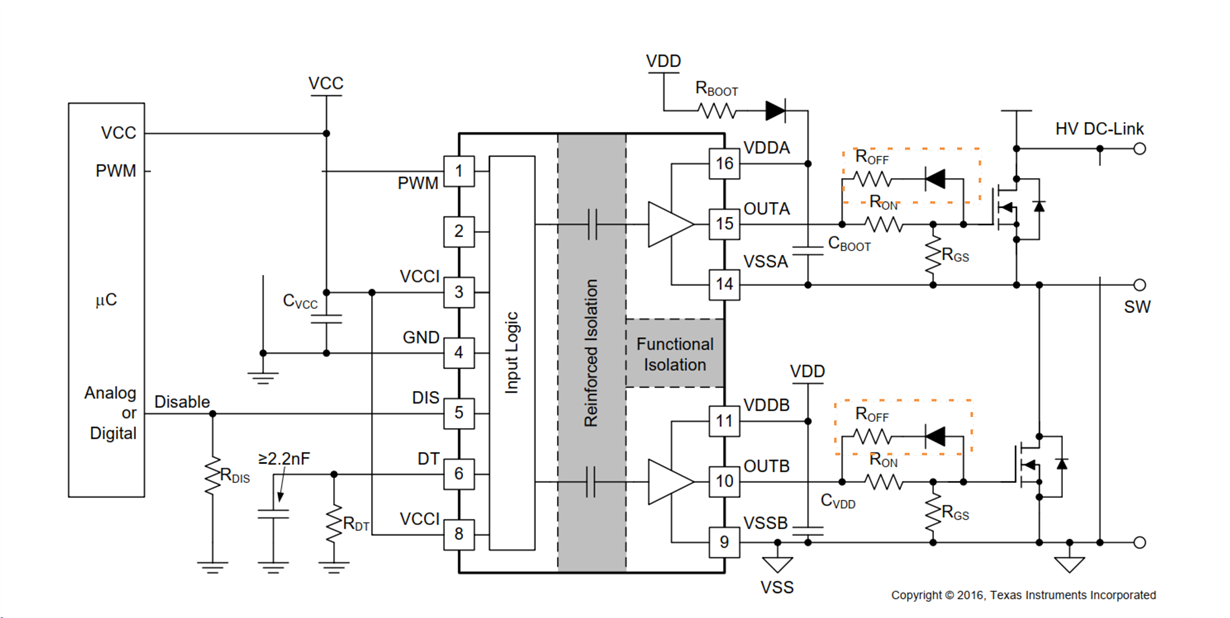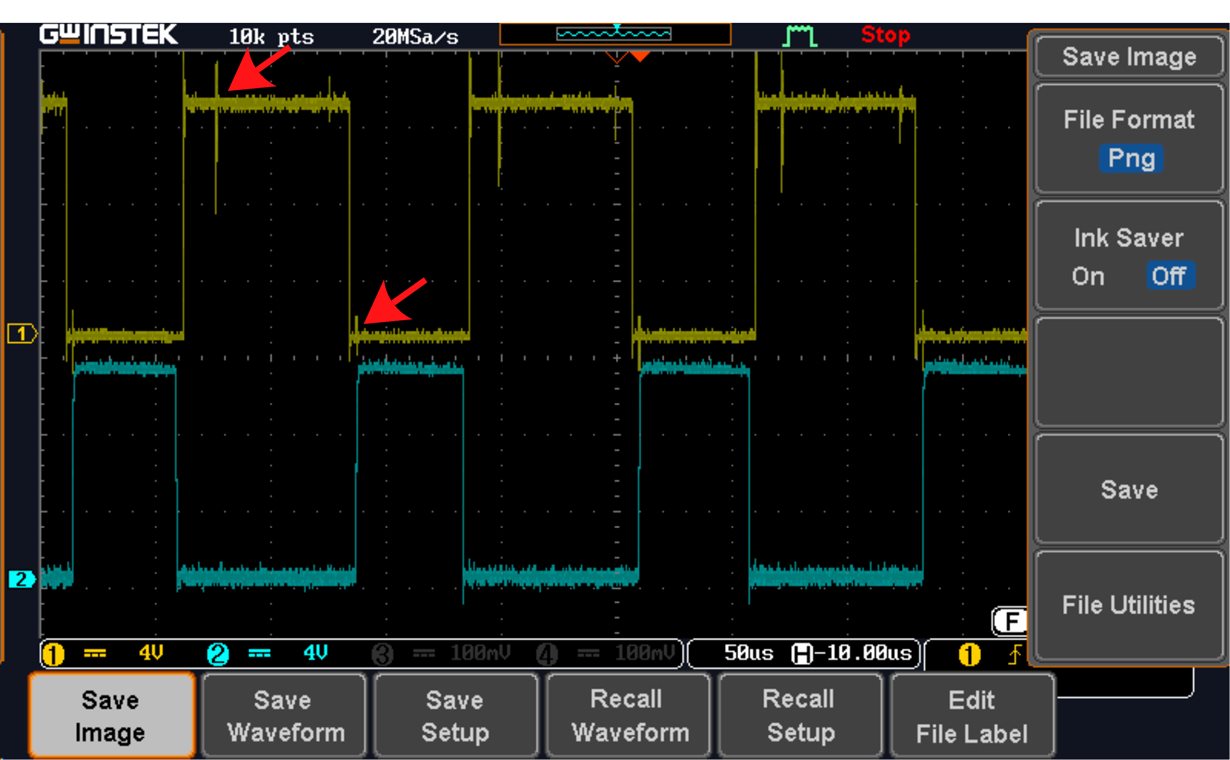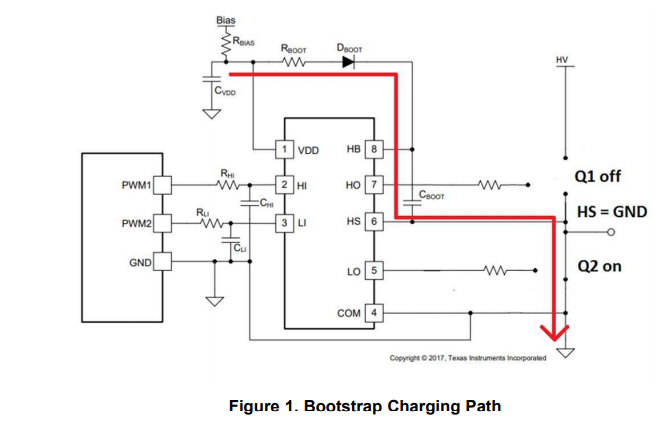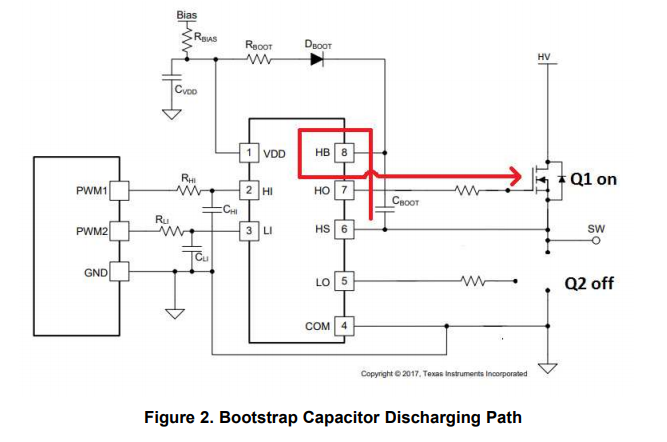Hello everyone, I appreciate your help me to figure out what is my problem,I just started to use the driver UCC20520 and i don't have experience using this devices.
Thank you in advance.
I´m using this driver to control a half bridge inverter where is connected a single-phase motor, which nominal current consumption is about 20Amps-Peak (13Arms) and at the starting up to 35A-peak, 179 VDC-link voltage. Is supposed that my IGBTs can drive that current but i´ve blowing it up.
In the next diagram show how the circuit was connected and the values that were use. DIS pin was grounded without resistance and diode and resistance inside dotted lines were not used, Rgs = 10K, Ron = 10, Cboot = 1uF(metallic polymer), Rboot = 10, Rdt = 75K. the bootstap diode is an 1N4007.
Is it necessary to use the resistance and diode to discharge the gate?
The bootstrap diode, what is it for?
How the Ron affects the behaviour of the leg?
The signals that I got are the next ones:
- in the first screen are showed the voltages at the gates, the blue one is the high side and de green one is the yellow.
- The second is the voltage between phases,
Is it normal to have those voltage spikes?
And related with the code to generate the SPWM signals, how the minimul pulse width affects the UCC driver?
because i noted that if this is to small it can distorted the pwm signals.







